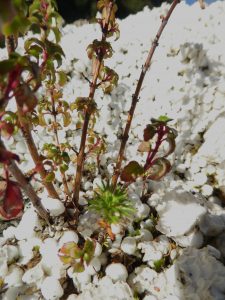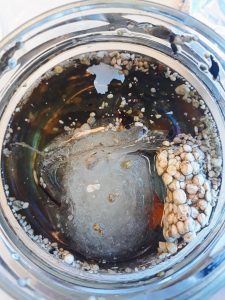A series about scientific research in Chile’s remote Golfo de Corcovado
This is the first in a series of blogs that I’ll be writing about the results of the research I have been conducting in Northern Patagonia – a remote, beautiful and iconic region of Chile. This project started in April 2019 and I hope to finish it during 2020. In this first installment, I’ll tell you more about why I went there and what I hoped to find.
The beginning
I received an invitation from Haka Honu (a conscious Chilean brand), to participate in a documentary that seeks to show unknown areas of Chilean Patagonia. We wanted to know what this territory had to offer (once inhabited by now extinct Chilean nomadic people) in terms of surfing, and find out more about its vulnerabilities and how an area known worldwide as “pristine” coexists together with plastic in its waters and on its coasts.
The preparation
I embarked for two weeks as part of the Plastic Oceans International and Haka Honu expedition team, leaving for remote and insular areas of the Chonos Archipelago to conduct scientific research on plastic pollution there.
I prepared myself for months, studying about the fjords, the geography of northern insular Patagonia, the threats in the area and its marine currents. I prepared all the equipment that would allow me to do the studies and I had to define what answers I was looking for during and after the trip. Some of my questions were: “What would be the best protocol for obtaining plastic from the ocean surface? What happens to the floating garbage in those territories?” From these preparations I identified several possible sources of plastic in the insular area of Patagonia, but I had to go there to confirm it.
Northern Patagonia

Foto: Camila Ahrendt
On April 10, 2019, I finally set foot on the Tifarra, a 26.6 meter yacht which was going to be my home and laboratory for the next two weeks. Once on the ship, leaving from the port of Puerto Montt, I couldn’t believe I finally made it to the open sea. The wildlife we saw during the expedition were fascinating: Dolphins, whales, penguins, large flocks of seabirds, and even bioluminescent organisms. It was interesting to see how wildlife and flora also interact with the plastic invasion…indeed, the plastic invasion started from the first minute we took off! There were several instances when I saw it with my own eyes.
On the boat I had the opportunity to open fish stomachs, finding small plastic balls and fibers of the same material. I also saw birds picking their way between discarded fishing nets. After a storm, I collected water samples and guess what I found? Zooplankton mixed with lots of styrofoam (PS). Surely the water mixed a lot during the storm, and what I found was resuspended plastic.
Plastic

Foto: Camila Ahrendt
Imagine … here we were on the boat, in a relatively unexplored area of Chilean Patagonia, surrounded by nature and without humans living nearby. People rarely visit the places we went because it is expensive and difficult to get there. But still, there was a huge amount of plastic contamination, which appeared in all shapes and sizes (macro, micro and nanoplastics).
One of the main reasons why there is so much plastic in those waters, is because almost no one goes to these places on a regular basis, meaning there is less of a chance of people cleaning everything up that reaches the beaches and islands, after being dragged for miles away from their source. Another source of pollution are the companies that operate salmon and mussel farms, as they do not usually deal with their waste – such as nylon cables, tubes and styrofoam buoys. There are no efficient plastic waste management systems in the middle of islands and fjords, so they just leave it there. We witnessed first hand how these incredible beaches are being silently polluted, profoundly and negatively affecting ecosystems.
Floating Marine Debris, the study

Foto: Francisco Herrera
I am currently working on a scientific study that seeks to compare the amount of floating marine debris (FMD) observed during the expedition, with studies carried out 10 years ago in the same geographic area. One of the main components of marine debris is plastics. Some debris sinks immediately to the bottom of the sea, while others can float for weeks or months, moving at the mercy of surface currents and wind, and possibly interacting with resident or migratory fauna in a negative way.
Conservation
It is clear that these remote areas of Patagonia are not as protected as you would expect. This continuous and silent pollution in remote places, like Patagonia, should be taken more seriously. Legislation and inspection needs to be improved to ensure that the local industry (mainly aquaculture) takes care of its own waste. There must be proactive plans for waste management and prevention of plastic pollution, not just reactive efforts. It’s necessary to protect the insular Patagonia, because it is a key area for the conservation of biodiversity. In its waters there are invaluable migratory routes, rest areas and food for marine life. Plastic shouldn’t belong in that equation.
HEADER PHOTO: Pablo Jimenez
PLEASE CONSIDER DONATING TO SUPPORT OUR EFFORTS TO END PLASTIC POLLUTION

Trackback: sell weapons
Trackback: 86kub
Trackback: steenslag folie
Trackback: สล็oต PG
Trackback: gray zone challenger
Trackback: BAU4IQ
Trackback: read what he said
Trackback: หวยดาวโจนส์ คืออะไร เล่นได้ที่ไหน
Trackback: สล็อต เครดิตฟรี